Rodeostat in peer-reviewed publications
Highlighting ways the Rodeostat open source potentiostat has been used in science research and education

This week we are highlighting some peer-reviewed publications that have used the Rodeostat open source potentiostat to showcase how science researchers & educators are using open-source hardware tools in unique ways!
Rodeostats around the World
We first published our Rodeostat Open Source Potentiostat in March 2017 in this blogpost:
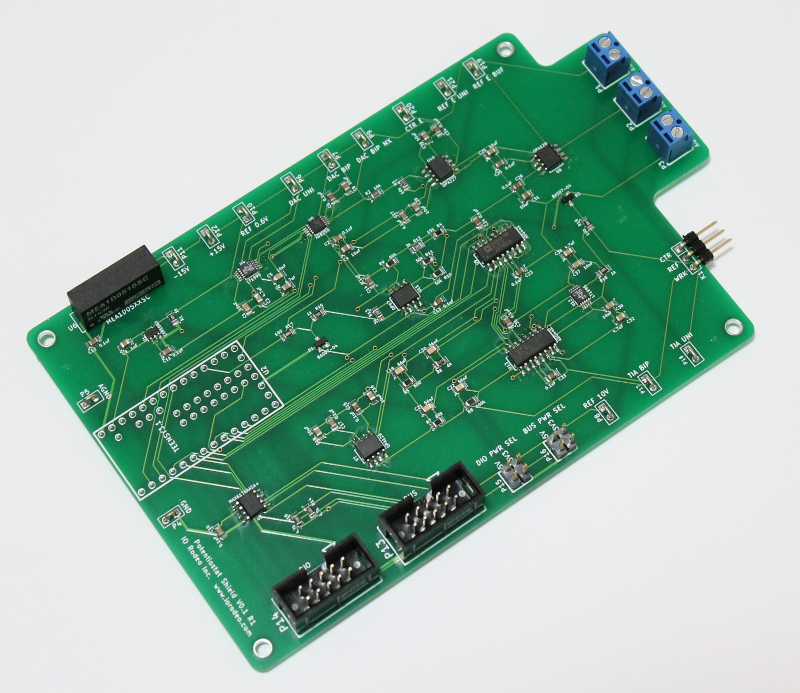
Since launching our our online store, we have shipped the Rodeostat to 42 countries. The map below indicates many of the cities where the Rodeostat has been shipped. That does not include locations where people have made their own devices from the opens source design in labs and makerspaces!
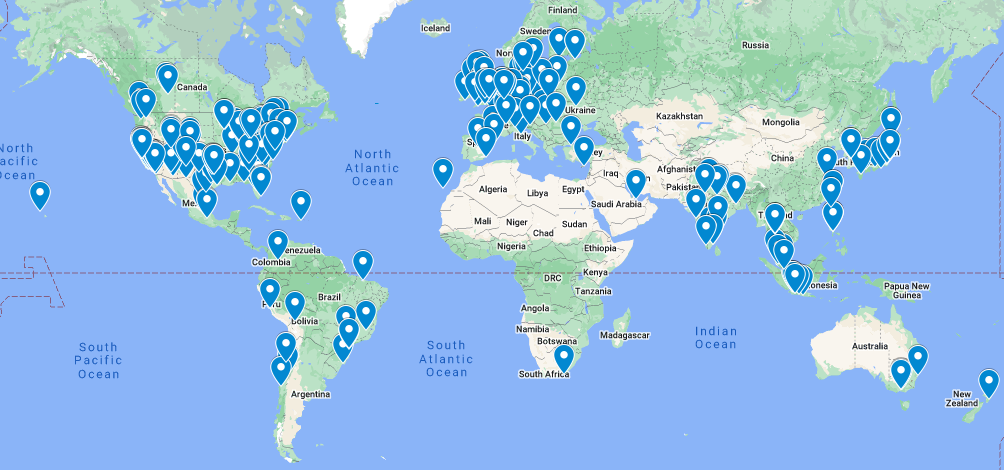
Rodeostat in peer-reviewed publications
This week we conducted a quick literature search to learn how the Rodeostat has been used over the last five years, and to highlight the flexibility of open hardware in general. We focus on 7 publications which cover a broad range of topics including environmental monitoring, medical applications & STEM education.
- Rodeostats were used to develop affordable & portable electrochemical instruments for detecting & quantifying toxic heavy-metal pollutants in Central Mexico (1) and Malaysia (2)
- Rodeostats have been used to develop new biosensors for medical applications such as detecting glucose (3) and dopamine (4)
- The Rodeostat was used in two studies using plant-based materials for developing alternative electrodes, including nanoparticles for the dopamine biosensor mentioned above (4) and novel paper screen-printed electrodes (5)
- One study incorporated Rodeostat hardware and software with other open source tools to develop a feedback control system with electrochemical sensing (6)
- Rodeostat open source hardware and software was also used to demonstrate the feasibility of project-based undergraduate engineering education (7)
The studies (1-7), with citations and links, are discussed in more detail below. Taken together they demonstrate the importance of open hardware tools for researchers & educators to be able to develop and use:
- Low-cost instruments, especially for under-resourced labs. Generally quantitative methods used in environmental field research studies utilize expensive testing equipment (e.g. AAS or ICP-MS). These can be inaccessible to many researchers, especially in developing countries. Using open hardware tools is proving to be a great low-cost alternative, while maintaining accurate measurements.
- Portable instruments for on-the-ground experiments. Environmental field research tools need to be portable for fieldwork where samples may need to be measured in situ or as close to as possible. Lab-based instruments (non-portable) can be impractical in these cases, and using open source hardware is a great way to develop these tools.
- Custom research instruments for lab and fieldwork. Most of the publications highlighted in this Newsletter have customized the hardware and/or software to suit their needs. This is generally not possible with closed-source, proprietary scientific instruments and is one of the biggest advantages of using open source hardware.
- Curriculum for teaching project-based, active learning programs. Science education can benefit greatly from using open source hardware & software. Students can learn from existing hardware and software design files and collaborate with other students on projects.
Rodeostat publications reviewed
(1) Developing an affordable arsenic detection instrument for monitoring groundwater in Central Mexico
In this recent paper, Bullen et al, (2022), describe the development of a low-cost method for detecting arsenic using an open-source potentiostat (Rodeostat).
"This work aimed to develop the first low-cost method for the electrochemical detection of arsenic using an open-source potentiostat."
Arsenic is a carcinogenic contaminant and a major threat to public health. Current analytical methods used to reliably detect and quantify arsenic are either expensive and non-portable (e.g. AAS or ICP-MS) or are not accurate (colorimetric detection with test strips). The Rodeostat was used to perform anodic-stripping voltammetry (ASV) of samples using either screen-printed electrodes with gold working and counter electrodes or a gold microwire working electrode and iridium counter electrode. Data from the Rodeostat was compared to a PalmSens commercial potentiostat. The authors wrote custom software for their experimentation, further demonstrating the applicability of open hardware science instruments. From their results they showed detection of low-levels of arsenic using this portable, low-cost instrumentation, opening up the possibility for improving arsenic detection in resource-limited labs and in field studies where portable instrumentation is needed.
(2) Heavy metal detection from wastewater generated by Batik industry in Malaysia
Batik is a traditional handmade textile craft, important for the economy and tourist industry in Malaysia. Dyes used in Batik production contain heavy metals, including lead, arsenic, chromium, zinc and more. Heavy metal contamination in water is highly toxic to the environment and human health, and so monitoring heavy metals in production waste from Batik factories (and mitigating discharge to environmental water) is crucial to preventing pollution. In this paper, Umar et al (2020) discuss the lack of affordable, portable instrumentation for easily analyzing samples for heavy-metals in the field. In this paper, they describe the development of a novel instrument (HMstat) and compare performance to Rodeostat measurements. The Rodeostat and HMstat were used to perform Square Wave Anodic Stripping Voltammetry (SWASV) with solutions of 10ppm lead (Pb) or 10ppm Cadmium (Cd) and screen printed gold electrodes. They found that the Rodeostat and HMstat both detected these metals, with the Rodeostat displaying increased sensitivity to Cd and comparable sensitivity to Pb.
(3) Developing a novel glucose biosensor with alginate cryogel modified with nickel ferrite nanoparticles
Development of new and improved biosensors is an area of intense research. One of the most well-known examples of a biosensor is the glucose test strips used for monitoring blood glucose levels. We have previously used the Rodeostat with these glucose test-strips as described in this 2017 Project Tutorial:
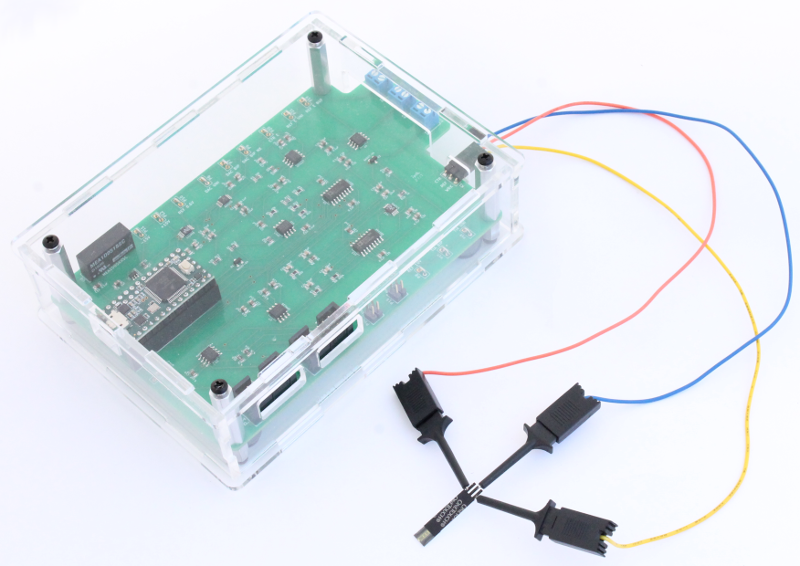
In this paper (Fatoni et al 2021), researchers at Univeritas Jenderal Soedirman in Indonesia developed a novel glucose biosensor. The biosensor is modified with the biopolymer, alginate, and supplemented with nickel ferrite nanoparticles. The Rodeostat was used to perform cyclic voltammetry (CV). The working electrode was a glassy carbon electrode modified with alginate-nanoparticles. They performed optimization experiments for the modified working electrode including optimizing for nanoparticle concentration, scan rate, buffer pH and buffer concentration with potassium ferricyanide test solution. They also showed a linear response to glucose concentration and reported increased sensitivity when compared to other glucose sensors.
(4) Developing a nanoparticle biosensor with plant-based materials
Kumar et al (2021) at Vellore Institute of Technology (VIT), India, published a new approach to preparing nanoparticles using plant-based materials. In this example they prepared zinc oxide (ZnO) nanoparticles using onion extract in this proof-of-concept study. The Rodeostat was used for cyclic voltammetry (CV) measurements using dopamine as the target molecule, and the modified ZnO nanoparticle glassy carbon electrode as the working electrode. They found that the limit of detection for dopamine with the biosensor developed in this study was comparable to biosensors used in other studies and highlight the green approach (versus using chemicals) in the preparation of ZnO nanoparticles: "nanoparticles prepared from plant extract can act as a reliable working electrode ... preparation of nanoparticles using green approach does not require toxic chemicals and reagents".
(5) Developing screen-printed electrodes from invasive plant species
In this paper, (Karlovits et al, 2021) researchers based in Slovenia investigated unique paper-based substrates made from invasive plant species as alternatives to ceramic and other commercial screen-printed electrodes. As they state in the paper: "this knowledge ... can be valuable in improving further usage of disposable and recyclable electrodes in fieldwork applications, especially in the environmental protection field". The Rodeostat was used to perform Cyclic Voltammetry on a solution of ferrous cyanide using different screen-printed electrode materials as the working electrode.
(6) Electrochemical sensing in an automated system for neural implant studies
The authors (Street et al 2018) previously developed an in vitro system for evaluating neural implant materials. The system replicates parameters found in in vivo studies (hydrogen peroxide concentration and temperature), while allowing for testing on an accelarated time scale. In this paper, they describe further advancements to the system by implementing automated closed-loop monitoring. By automating the platform they aim to make an easier-to-maintain system with improved performance. The core of the automation is electrochemical sensing of hydrogen peroxide. The instrument utilizes two Rodeostat potentiostats for hydrogen peroxide detection by chronoamperometry. A platinum disk is used as the working electrode. The system uses the open source software (Rodeostat Python library) to interface with a Raspberry Pi, which controls pumps to maintain the concentration of hydrogen peroxide (pumping solutions in/out via peristaltic pumps).
(7) Using a Rodeostat in Project-Based Engineering Education
Bogoslowski et al (2021) and colleagues at McMaster University, Canada, report results from project-based learning in an undergraduate engineering technology program. Students were tasked with designing an experimental procedure for using a novel biosensor. They report using the Rodeostat potentiostat as the open hardware platform, along with a gold coated screen printed electrode. Students designed experiments to monitor hybridization between a probe DNA strand and its complementary on an electrode surface. Students worked together to write custom software (a graphical user interface application) as well as designing and producing custom screen-printed adapter hardware.
Share how you are using the Rodeostat
We would love to hear about how you are using the Rodeostat in your work or hobby! Post in a comment below or hit the button below to send us a quick message and we will follow up!
Purchase a Rodeostat
Want to try the Rodeostat Open Source Potentiostat? Visit our online store or click on the link below!


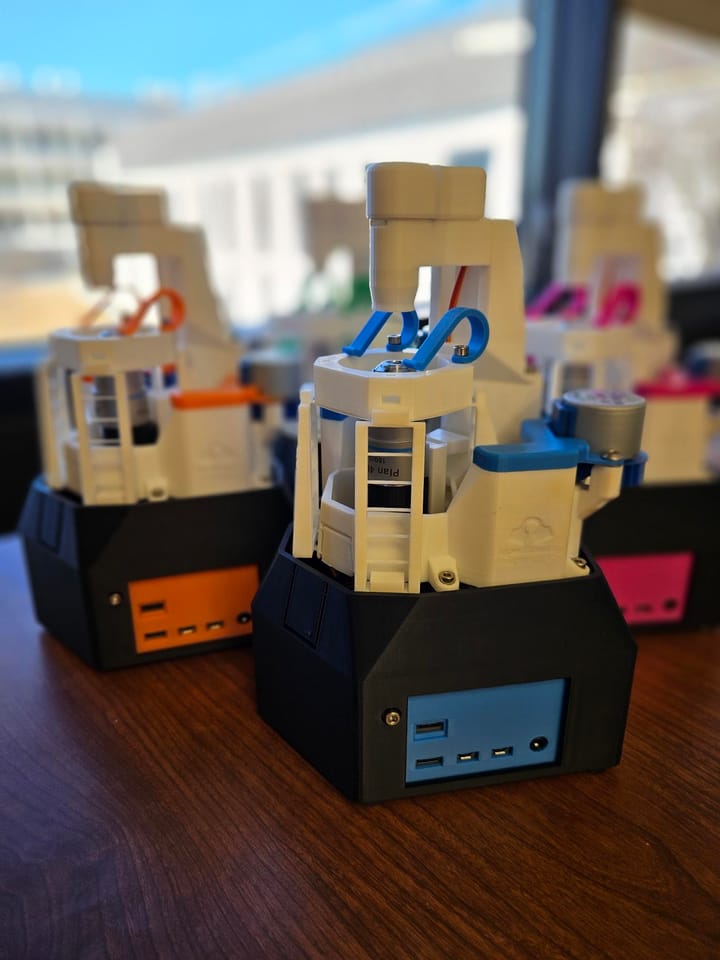
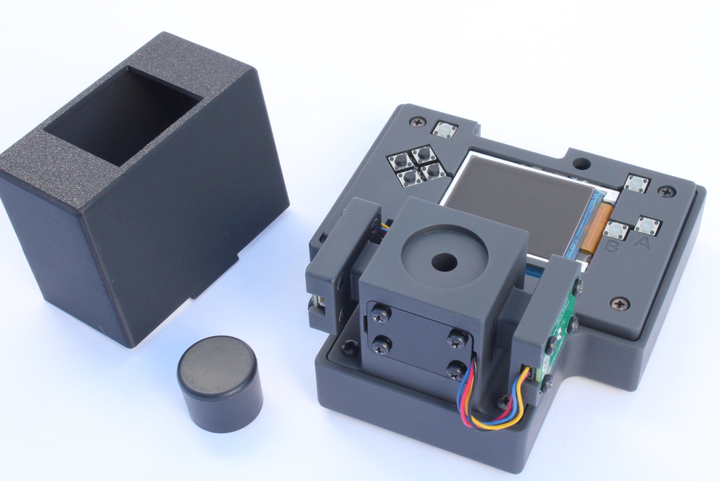

Comments ()